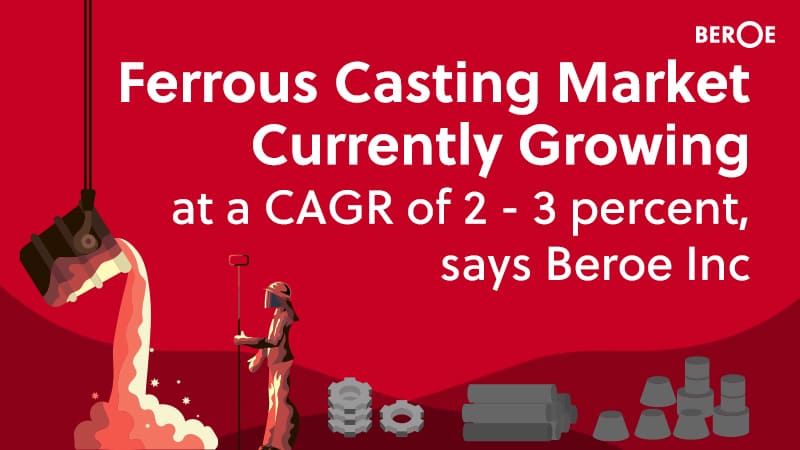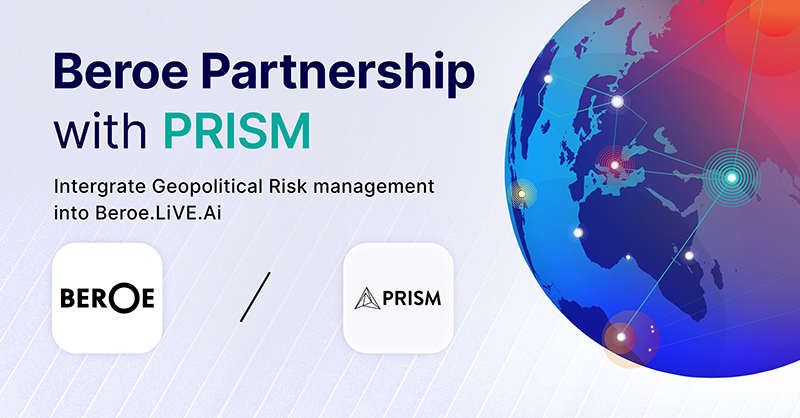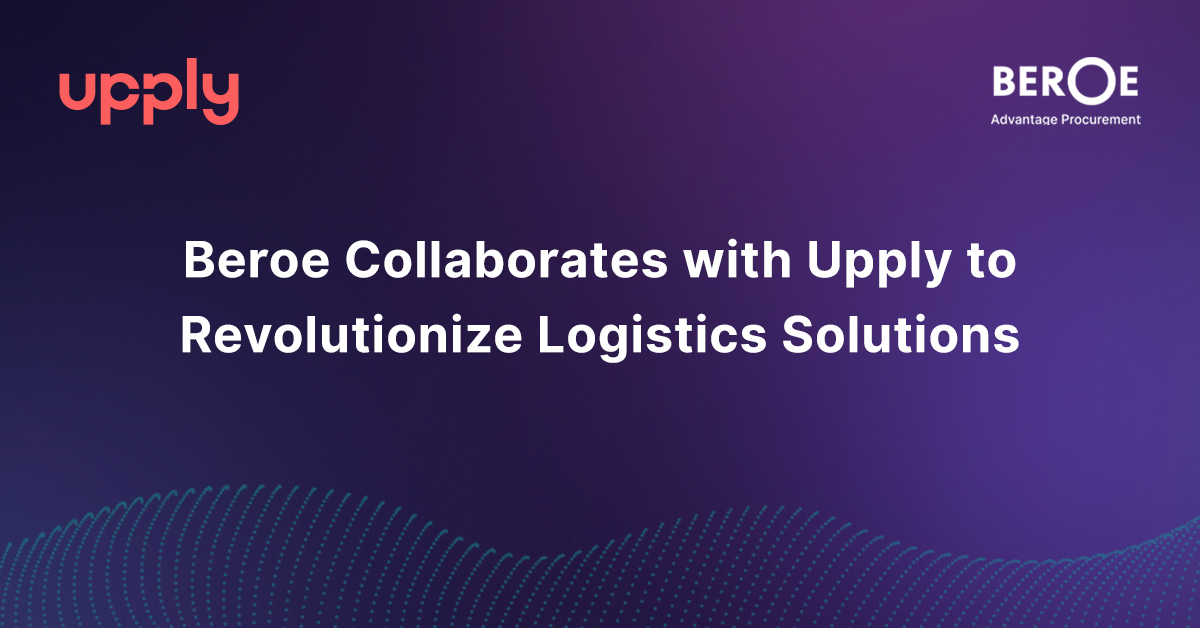Ferrous Casting Market Currently Growing at a CAGR of 2 - 3 percent, says Beroe Inc
Source: PR Newswire

RALEIGH, North Carolina, April 4, 2019 - The current market for ferrous casting, a compound that is made using the sand-casting process, is currently estimated at 62.44 MMT, according to Beroe Inc., a procurement intelligence firm. The current total market size for non-ferrous castings is estimated to be 49.06 MMT to grow at a CAGR of 1 - 2 percent to 51.12 MMT. Automobile and industrial machinery are two major end-use industries, which serves as a key demand driver for the sand castings production.
Almost 70 percent of ferrous castings and 25 percent of the non-ferrous castings are molded using the sand casting process, and China contributes to nearly 45 - 47 percent of the global sand castings production. In the case of the ferrous castings, China is followed by India, whereas the US takes the second position in producing non-ferrous castings.
https://www.beroeinc.com/category-intelligence/sand-castings-market
Beroe, which is based in North Carolina, further stated that procurement experts can access this report on its recently launched market intelligence platform Beroe LiVE: live.beroeinc.com
The material is the major cost driver for the castings industry, which includes both direct materials such as pig iron, ferrous scrap, aluminum, etc. and indirect materials such as sand, resins, etc. Energy is another major cost driver, which affects the cost of the castings. The energy cost varies according to the metal used (higher for ductile iron compared to GI castings) and the type of molding method.
On a global level, the intensity of rivalry across the whole industry is high due to the fragmented domestic supply and high competition from low-cost foreign suppliers. Manufacturers compete by offering various value-added services and differentiate themselves from rivals on the basis of cost and product quality.
Key Findings:
- The environmental regulations in the developed nations are very stringent; hence, the factories are likely to invest more in environment-friendly practices such as the recycling of sand, usage of silicate binder, etc.
- Substitute processes are typically preferred for castings where the high-quality level or low volume is required. Thus, the threat of substitutes is low for the sand castings market as a whole.
- Integration with suppliers in terms of design reduces the overall cost and helps in leveraging their expertise. Collaboration in casting design and rapid tooling are also adapted in several plants.
- An emerging trend in the field of pattern making is the use of 3D printing technology for making the mold. The technology is gaining momentum in the developed countries, but a majority of the developing economies aren’t well-equipped to grasp the change.
- China’s largest steel-producing province; Baoding, Zhangjiakou and Langfang will be cleared of steel production facilities by 2020. Another two cities; Chengde and Qinhuangdao will see their crude steelmaking capacity reduced by 50 percent.
- The demand for agricultural machinery, transport equipment, and machine tools is expected to be a key growth driver in the sand casting industry.
The research methodology adopted for the report included:
- Experts with twenty years of domain experience
- Interaction with buyers
- Inputs from supply chain partners
There are two types of contract structures that are followed in the sand castings industry. The contract structure varies from a one-time shipment to yearly contract or long-term contracts based on the client requirement. The price change occurs on a monthly basis depending on the rise or fall of sand castings process in the case of long-term contracts. In one-time orders, the price remains constant from the date of order to the date of delivery.
The report also includes:
Market Analysis:
- Global Sand Castings: Market Maturity
- Global Sand Castings: Industry Trends
- Regional Market Outlook
- Porter’s Five Forces Analysis: Developed Global
Supplier Analysis:
- Key Global Sand Castings Suppliers
- Key Global Supplier Profile
- Supplier SWOT Analysis
Cost & Pricing Analysis:
- Cost Structure
- Cost Drivers: Raw Materials, Electricity, and Labor
Procurement Best Practices:
- Contract Structure
- Emerging Technologies: Pros and Cons
- Industry Best Practices
About Beroe Inc.:
Beroe is the world's leading provider of procurement intelligence and supplier compliance solutions. We provide critical market information and analysis that enables companies to make smart sourcing decisions—leading to lower costs, greater profits and reduced risk. Beroe has been providing these services for more than 13 years and currently works with more than 10,000 companies worldwide, including 400 of the Fortune 500 companies.
To learn more about Beroe Inc., please visit: http://www.beroeinc.com
Media Contact:
Rob McMurtrie
rob.mcmurtrie@beroe-inc.com
Related News
View all
Beroe Makes Strategic Investment in Forestreet, Strengthening AI Capabilities and Driving Procurement Intelligence Innovation

Beroe introduces on-demand geopolitical risk analysis through PRISM enabling C-Suite to protect against ongoing supply chain disruptions
